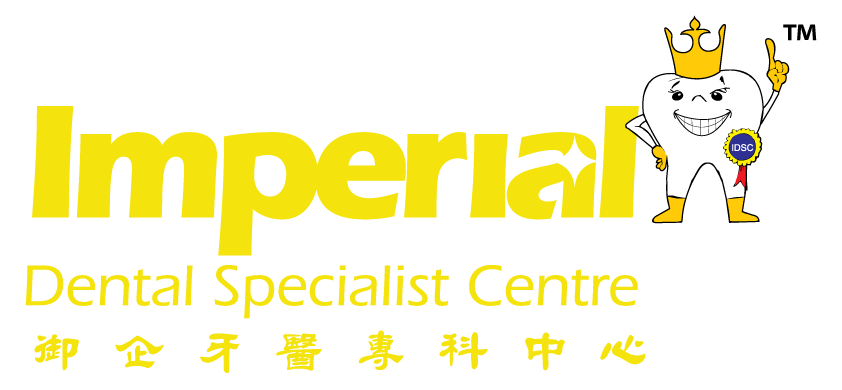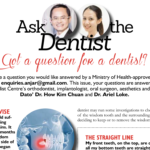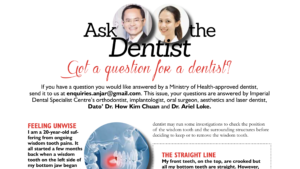
Abstract
This article is a case report which follows a 25 year old male, with a Class 3 skeletal case with severe mandibular excess and maxillary deficit. The patient was planned for orthognatic surgery for correction of his severe skeletal discrepancy. The main focus of the article will be on the orthodontic point of view regarding treatment before and after surgery. A clear aligner system was prescribed for pre-surgical orthodontics where we noticed significant improvement on tooth alignment and tooth torque correction. The patient underwent a double jaw surgery, involving maxillary advancement and bisaggital split osteotomy for mandibular reduction. Post-surgical, a self-ligation bracket system was used for finishing alignment and occlusal fitting.
This case is unique where a combination of clear aligners and fixed appliance is used to achieve optimum treatment result.
Introduction
Orthodontics has been dealing with tooth movements, where dento-alveolar and skeletal changes are eminent. In the growing age, interceptive orthodontics are practised to minimize the full expression of severe skeletal discrepancies. If the skeletal growth has fully expressed or the skeletal discrepancy is severe, orthognathic surgery will be an option for full correction of a malocclusion due to skeletal discrepancy.
Orthodontics has drastically evolved its methods over these past decades. It has evolved from removable appliance, to banded fixed appliance, to bonded fixed appliance, and to clear aligners.
Clear aligners in orthodontics faces more demand nowadays due to its aesthetics and comfort. Clear aligners which we used in this case are Invisalign® by Align Technology. Invisalign is a customized clear
aligner system which applies light forces towards the desired tooth position with every change of aligner. Aligner is typically changed every 2 weeks after the orces of aligners have fully expressed. Invisalign involves an accurate scan of the dentition which is projected to the monitor screen. Using dedicated software, a careful orthodontic plan is fabricated. Once the planning is complete, a series of aligners will be manufactured with a pre-planned tooth movement according to the master plan. In this case, we are going to explore the hydrid technique of harvesting the potentials of both clear aligners and self-ligating brackets for an orthognathic surgery case and get the best of both worlds.
Case History
This is a 25 year old , Indian, male, who came to our clinic with his teeth not biting properly causing chewing difficulty. He also feels that his lower jaw is very long and  protruding. On examination, we found he has a class 3 profile with increased lower facial height, high mandibular angle and grossly incompetent lips due to mandibular excess. Incisal exposure on smile was insufficient. the patient was not satisfied with his general appearance due to his severe skeletal discrepancy and this usually had an effect on his selfesteem. Intraorally, a typical clinical presentation of a Class 3 malocclussion case is seen. The upper incisors are proclined with narrow V-shaped upper arch while the lower arch is broader than the upper arch with lower anterior crowding and retroclination of lower incisors. (Fig. 1)
protruding. On examination, we found he has a class 3 profile with increased lower facial height, high mandibular angle and grossly incompetent lips due to mandibular excess. Incisal exposure on smile was insufficient. the patient was not satisfied with his general appearance due to his severe skeletal discrepancy and this usually had an effect on his selfesteem. Intraorally, a typical clinical presentation of a Class 3 malocclussion case is seen. The upper incisors are proclined with narrow V-shaped upper arch while the lower arch is broader than the upper arch with lower anterior crowding and retroclination of lower incisors. (Fig. 1)
A discussion was carried out with the patient and the option of choice would be an orthonagthic surgery which will fully correct the skeletal discrepancy and greatly improve the patient’s aesthetics. Now that the option of orthognathic surgery is the plan, we would have to figure out the orthodontic master plan.
We planned an orthodontic plan with a combination of clear aligners (Invisalign®) and fixed appliance. Initially, Invisaligns were used to carry out initial alignment work for the patient. Aims for pre-orthognathic surgery orthodontics included correction of tooth alignment and correction of torque of dentition in relation to its basal alveolar bone. Clear aligners were chosen for pre-orthognathic surgery orthodontics because of its early torque expression ability. In addition, treatment was planned using 3-dimensional software which can clearly show the initial position of the dentition(Fig. 5), the final position of the tooth which will be achieved (Fig.6) and prediction of interarch occlusion after the surgery (Fig.7). The final outcome of the teeth alignment was simulated and visualized on the computer monitor during the planning stage.
We used Invisalign for two years and have achieved agross alignment of upper and lower arches. (Fig. 2) The dentition was of normal torque with respect to their alveolar base. Each aligner was pre-planned to cause a 0.2 mm tooth movement. As expected, reverse overjet had worsened due to “decompensation “mechanics of pre-orthognathic surgery orthodontic movements. There was an improvement of lower incisal torque from 63° to 72.8°, which was 9.8° of torque correction of
the lower incisors in relation to their mandibular base. (Fig. 8 & 9).
 Modifications were done on the teeth to allow post-surgical jaw fixation and settling of dentition. Composite buttons were placed on the buccal surfaces of all the teeth (Fig. 3) to allow for placement of stabilization apparatus, whether it is intermaxillary arch fixation or some heavy elastics.
Modifications were done on the teeth to allow post-surgical jaw fixation and settling of dentition. Composite buttons were placed on the buccal surfaces of all the teeth (Fig. 3) to allow for placement of stabilization apparatus, whether it is intermaxillary arch fixation or some heavy elastics.
The patient was referred to an oral and maxillofacial surgeon for a maxillary advancement and mandibular setback surgical procedure to be done. Orthognatic surgery has fully corrected the skeletal discrepancy and the patient has a Class 1 profile. The dentition is also brought back into a class 1 incisal and molar relation.
Post-surgical orthodontic treatment was carried out using self-ligation bracket system(SLBS).We carried out finishing and detailing work with SLSB which took 11 months. In this case, we used a 0.022-inch slot Roth prescription bracket system (ForestadentBioQuick®), which is an Interactive Self-Ligation System (ISLS). We started off with an 0.018” round Nitiarch wire to achieve a 1st order alignment correction. We then progressed to a 0.017×0.025” Niti arch wire for the
finishing work. We repositioned the brackets such that it caused movement in the 2nd order for tipping of premolars to achieve an interarch occlusal fitting. Finally, light series settling elastics 1/8” which gives around 71 grams of force was used for occlusal settling. (Fig. 4)




Discussion
Invisalign has the advantage of correction of malocclusion in 3 planes simultaneously; vertical, sagittal and transverse. In addition, it is also a frictionless orthodontic system where forces are lower, which is generally more comfortable and acceptable to a new orthodontic patient. In this case, we are looking decompensation mechanics where we would want to achieve a correction of crowding, tip and torque of the dentition with respect to their basal alveolar bone as fast as possible. With Invisalign, these are possible as due to the wrap-around action of clear aligners which make it possible for control of tooth movement in 3 planes simultaneously.
Torque can be expressed even from the start of the treatment. Torque, or the 3rd order of orthodontic mechanics, are usually expressed towards the end of a fixed appliance therapy using rectangular arch wires. Continuous light forces which are directed at the cervical third of the tooth results in early torque expression while the other parts of the aligner continues to apply forces for the desired tooth movements at the same time. Torque expression can be proven by improvement of the lower incisal torque by 9.8° comparing before and after clear aligner treatment.(Table 1)
the cervical third of the tooth results in early torque expression while the other parts of the aligner continues to apply forces for the desired tooth movements at the same time. Torque expression can be proven by improvement of the lower incisal torque by 9.8° comparing before and after clear aligner treatment.(Table 1)
Invisalign utilizes 3-dimensional scans and projection of the dentition onto a monitor screen. Clinician is then able to visualize the occlusion and dentition. A video plan can be constructed from the scan and a treatment planned visually. The progress and movements of the dentition is simulated until it is ready for surgery. Even the final jump of bite from Class 3 to class 1 occlusion post-surgery can be simulated in the video. This greatly improves the visualization of the treatment even
before it is started. These tools are essential, especially for explaining to the patient, and even more for the orthodontist to communicate with the surgeon and vice versa.
Self-ligation bracket system (SLBS) was chosen in this case for its reduced friction and early torque expression properties. We chose thebracket system instead of clear aligners as we felt more comfortable that we are always in control and any desired tooth movement can be directly dealt with. Interactive self-ligating system (ISLS) is a type of SLBS whereby its door or clip does not actively engages smaller arch wires.
This results in more comfortable initial treatment and allows for early light forces of torque expression. Bracket repositioning technique was used for the
finishing for this case. Brackets were positioned in such a way that compensated for the desired direction of tooth movement.
Conclusion
We agree that both systems, clear aligners and fixed appliance system, have their pros and cons. In this case, combining both systems we successfully utilized the benefits of both systems while minimizing their disadvantages. The end result was much more predictable and a better result achieved. Patients would have a better understanding of their entire treatment progress from the beginning and would definitely have a better patient compliance and also higher patient satisfaction level in the end.









